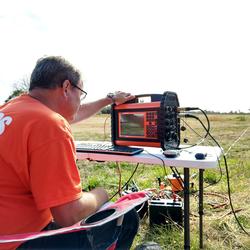Coastal Science
The NYWSC carries out multidisciplinary science activities across the State’s diverse coastal waters and landscapes on the Atlantic Ocean and the Great Lakes, including the many interconnected waterways, the barrier beaches that form and erode continually, the open waterways that are prone to the effects of major storms and hurricanes, and upland surface-water and groundwater source areas. These areas are also some of the most productive ecosystems in the State and host most of the population and economic development of the State. As a result, the interplay of environmental- and human-health concerns is a prominent thread that connects much of the coastal science activities of the USGS and involves cooperation not only among science disciplines but also across the Nation and internationally. Major topics of study include nearshore environmental health (ecosystem health and water and sediment quality), beach and barrier dynamics, tide and wave hydrodynamics, wetlands, climate and land-use change, and flood hazards.












